Black Ships and Sea Raiders
Greek Studies: Interdisciplinary Approaches
Series Editor: Gregory Nagy, Harvard University
Executive Editors: Corinne Pache, Emily Allen Hornblower, and Eirene VisvardiAssociate Editors: Mary Ebbott, Casey Du Hackney, Leonard Muellner, Olga Levaniouk, Timothy Powers, Jennifer R. Kellogg, and Ivy Livingston
On the front cover : A calendar frieze representing the Athenian months, reused in the Byzantine Church of the Little Metropolis in Athens. The cross is superimposed, obliterating Taurus of the Zodiac. The choice of this frieze for books in Greek Studies: Interdisciplinary Approaches reflects this series emphasis on the blending of the diverse heritagesNear Eastern, Classical, and Christianin the Greek tradition. Drawing by Laurie Kain Hart, based on a photograph. Recent titles in the series are:
Dramatic Action in Greek Tragedy and Noh: Reading with and beyond Aristotle , by Mae J. Smethurst
Greek Heroes in and out of Hades , by Stamatia Dova
Becoming Achilles: Child-sacrifice, War, and Misrule in the lliad and Beyond , by Richard Kerr Holway
Chronos on the Threshold: Time, Ritual, and Agency in the Oresteia , by Marcel Widzisz
Disguise and Recognition in the Odyssey, by Sheila Murnaghan
Choral Identity and the Chorus of Elders in Greek Tragedy , by U. S. Dhuga
Light and Darkness in Ancient Greek Myth and Religion , Edited by Menelaos Christopoulos, Efimia D. Karakantza, and Olga Levaniouk
When Worlds Elide: Classics, Politics, Culture , Edited by Karen Bassi and J. Peter Euben
Archaeology in Situ: Sites, Archaeology, and Communities in Greece , Edited by Anna Stroulia and Susan Buck Sutton
The Philosophers Song: The Poets Influence on Plato , by Kevin Crotty
Under the Sign of the Shield: Semiotics and Aeschylus Seven Against Thebes , by Froma I. Zeitlin
Metrical Constraint and the Interpretation of Style in Tragic Trimeter , by Nicholas Baechle
Diachronic Dialogues: Authority and Continuity in Homer and the Homeric Tradition , by Ahuvia Kahane
Fighting Words and Feuding Words: Anger and the Homeric Poems , by Thomas R. Walsh
The Visual Poetics of Power: Warriors, Youths, and Tripods in Early Greece , by Nassos Papalexandrou
Homeric Megathemes: War-Homilia-Homecoming , by D. N. Maronitis
A Penelopean Poetics: Reweaving the Feminine in Homers Odyssey , by Barbara Clayton
The Poetry of Homer: New Edition , Edited with an Introduction by Bruce Heiden, by Samuel Eliot Bassett
The Other Self: Selfhood and Society in Modern Greek Fiction , by Dimitris Tziovas
The Usable Past: Greek Metahistories , Edited by K. S. Brown and Yannis Hamilakis
Tragedy and Athenian Religion , by Christiane Sourvinou-Inwood
Imagining Illegitimacy in Classical Greek Literature , by Mary Ebbott
Black Ships and Sea Raiders
The Late Bronze and Early Iron Age Context of Odysseus Second Cretan Lie
Jeffrey P. Emanuel
Lexington Books
Lanham Boulder New York London
Published by Lexington Books
An imprint of The Rowman & Littlefield Publishing Group, Inc.
4501 Forbes Boulevard, Suite 200, Lanham, Maryland 20706
www.rowman.com
Unit A, Whitacre Mews, 26-34 Stannary Street, London SE11 4AB
Copyright 2017 by Lexington Books
All rights reserved . No part of this book may be reproduced in any form or by any electronic or mechanical means, including information storage and retrieval systems, without written permission from the publisher, except by a reviewer who may quote passages in a review.
British Library Cataloguing in Publication Information Available
Library of Congress Cataloging-in-Publication Data Available
ISBN 978-1-4985-7221-7 (cloth : alk. paper)
ISBN 978-1-4985-7222-4 (electronic)
 The paper used in this publication meets the minimum requirements of American National Standard for Information SciencesPermanence of Paper for Printed Library Materials, ANSI/NISO Z39.48-1992.
The paper used in this publication meets the minimum requirements of American National Standard for Information SciencesPermanence of Paper for Printed Library Materials, ANSI/NISO Z39.48-1992.
Printed in the United States of America
Acknowledgments
My deepest gratitude goes to Gregory Nagy, a peerless teacher, friend and mentor whose guidance helped achieve the convergence of Homeric and archaeological scholarship that resulted in this book. Without his support and inspiration, the project would neither have gotten off the ground nor reached its current state.
I am also indebted to Shelley Wachsmann, a giant in the field of Mediterranean seafaring and ship construction. For several years now, I and my research have benefited from his encouragement, insightful feedback, and willingness to share information.
I would also like to thank Kevin McGrath and Jacob Damm for several years of formal and informal conversations about many of the topics presented in this book, which have influenced its direction and progress more than they know. Likewise, the constant encouragement and unflagging support provided by Shaughn Casey and Jim Anderson has been more valuable to this project than I could ever express.
Reaching farther back in time, the introduction to Classical Archaeology as a discipline that I received from Naomi Norman as an undergraduate at the University of Georgia, and the love of history that was imparted in me by my high school World History teacher, Joseph Jarrell, were foundational experiences that many years ago helped set me on my present course.
Finally, and most importantly, I offer my love and gratitude to my family: my parents, Paul and Gail, who have been a source of unwavering encouragement throughout my life and academic career; Katie Emanuel, my wife and the love of my life, who has not only endured the years of research and scholarship that culminated in this book, but who has provided steadfast support and inspiration every step along the at-times-tortuous path; and my children, Jack, Kristen, and Connor, who have been as patient and supportive as possible throughout (not to mention endearingly excited that some of the illustrations in this volume are my own artwork!).
As with any work that whose creation and evolution spans several years, more debts of gratitude have been incurred than I could possibly repay. To everybody who has provided support, feedback, or constructive comments, or who has servedknowingly or unknowinglyas a sounding board for the ideas presented in this book, I am sincerely grateful. As always, the content itself, including any remaining errors or omissions are solely my own.
Chapter One
Epic, Oral Tradition, and Archaeology
, , ,
, :
,
,
.
, :
Tell me, O Muse, of the man of many devices, who wandered full many ways after he had sacked the sacred citadel of Troy. Many were the men whose cities he saw and whose mind he learned, aye, and many the woes he suffered in his heart upon the sea, seeking to win his own life and the return of his comrades. Yet even so he saved not his comrades, though he desired it sore, for through their own blind folly they perished...
Odyssey i, 17
So begins the Homeric epic about the hero Odysseus, the many-sided, much-traveled, versatile, ingenious man, and his decade of wanderings following the Achaean sack of Troy. These wanderings took the hero to places like the city of the Kikones, the land of the Cyclopes, Phaiakia, and even Hades itself, with myriad stops in betweenincluding, via false ainos , Crete, Egypt, Lebanon, and Libyabefore finally returning him to Ithaka, ten years after he first set sail for home and twenty after his initial departure.
Trials like these were not unique to Odysseus: other tales of suffering in the aftermath of the Trojan War can be found amidst the framework of heroic portraits that make up the epic tradition, from Menelaos eight-year journey home ( Odyssey iv, 8185) to Agamemnons murderous reception at the hands of his wifes lover, Aigisthos ( Odyssey xi, 409411). A major aim of this study is to chip away at one such individual storyOdysseus Second Cretan Liefor the purpose of shedding light on the interplay between a Homeric individual and the historical and archaeological background. As we shall see, at least some of the wanderings and sufferings of Homers epic heroes in general, and of Odysseus in particular, are not out of place when viewed against the larger tapestry of the chaotic transition from the Late Bronze Age to the Early Iron Age in the years surrounding the beginning of the 12th century BCE.
Next page
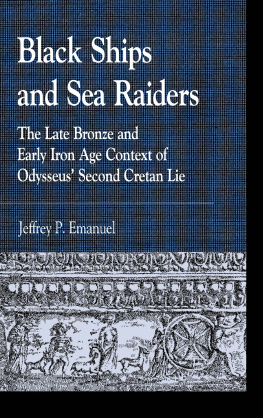



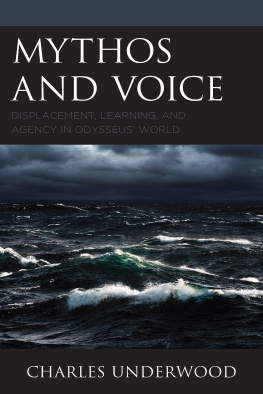
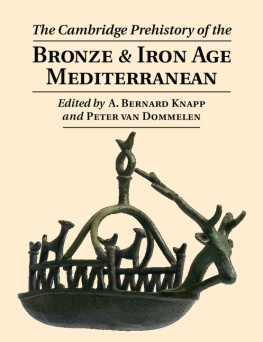

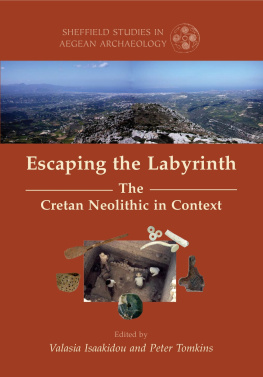
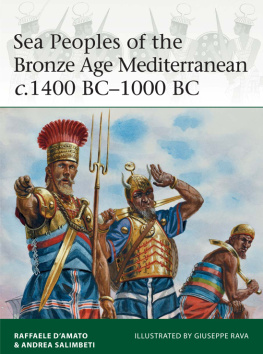
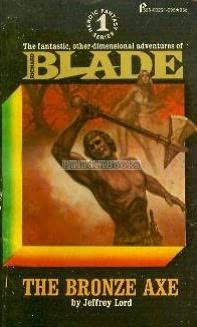
 The paper used in this publication meets the minimum requirements of American National Standard for Information SciencesPermanence of Paper for Printed Library Materials, ANSI/NISO Z39.48-1992.
The paper used in this publication meets the minimum requirements of American National Standard for Information SciencesPermanence of Paper for Printed Library Materials, ANSI/NISO Z39.48-1992.